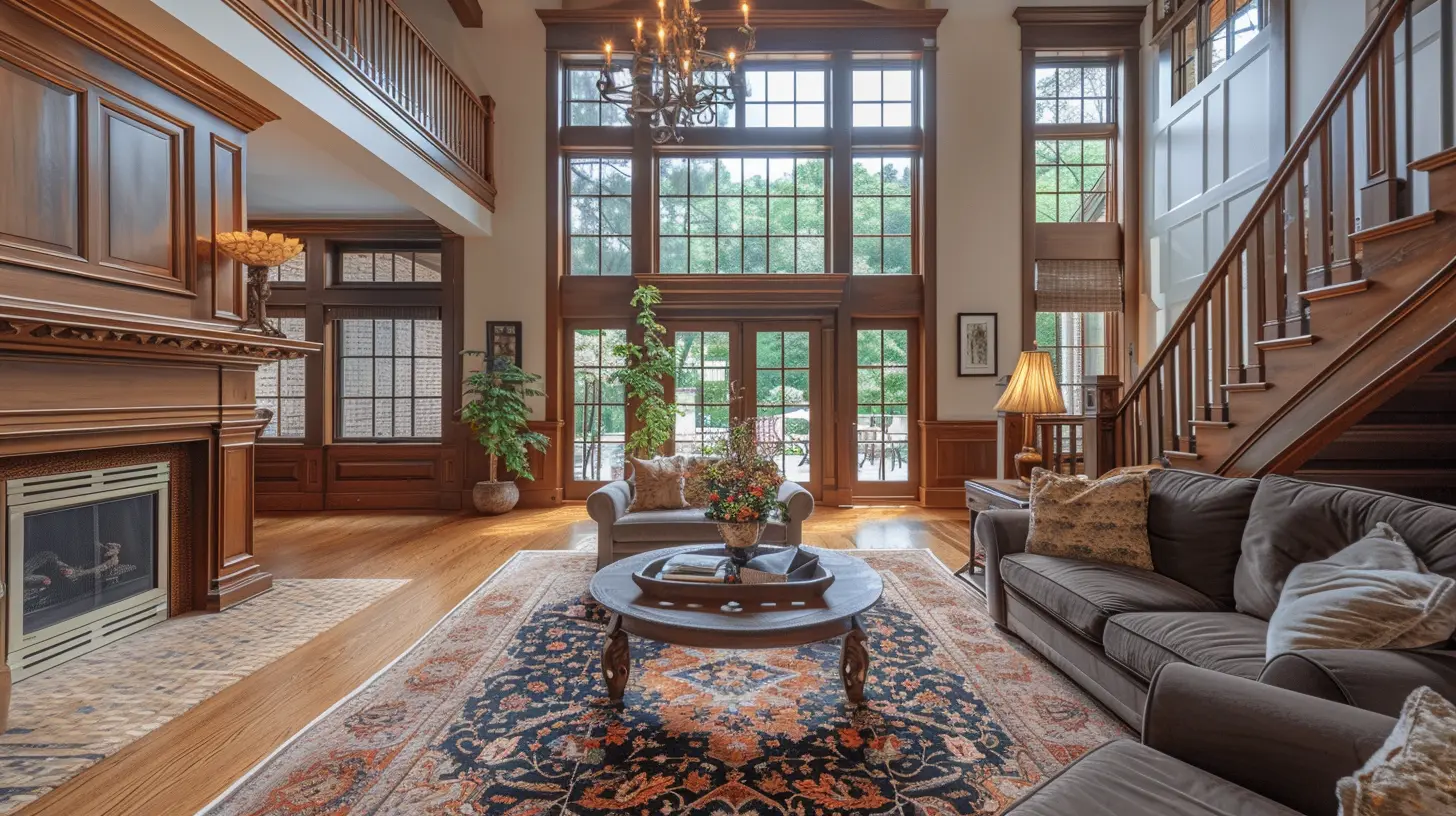What to Look for During a Home Tour: A Buyer's Guide
27 November 2025
Buying a home is one of the biggest decisions in life, and let’s be honest—it’s both exciting and nerve-wracking. A home tour is your chance to see if a house is truly "the one" or if it's hiding unpleasant surprises. But what exactly should you be looking for beyond the aesthetic appeal? Let’s break it down so you can walk into that home tour like a pro.

First Impressions Matter
The moment you pull up to the house, take a good look around. Does the curb appeal draw you in, or does something seem off? The home's exterior can give you clues about how well it has been maintained.- Cracks in the driveway or walkway? Could mean foundation issues.
- Peeling paint or rotting wood? Might signal neglect.
- Landscaping overgrown? Could indicate a lack of upkeep.
Your gut feeling matters. If the house looks unkempt from the outside, chances are there may be hidden problems inside too.

Structural Integrity: The Bones of the House
A beautiful kitchen and fresh paint can be tempting, but the structure of the home is far more important. You don’t want to fall in love with the decor only to find out later that the house is a money pit.- Cracks in Walls or Ceiling: Small hairline cracks are normal, but large, jagged cracks could mean foundation troubles.
- Uneven Floors: If you feel like you're walking on a slope, the foundation might have shifted.
- Doors and Windows that Stick: Could mean settling, water damage, or poor installation.
If anything seems questionable, a home inspection is a must before making an offer.

Plumbing: Check for Leaks & Water Issues
Water damage can be a silent destroyer, leading to mold, rot, and expensive repairs. Keep an eye out for:- Water Stains on Ceilings and Walls: Indicates past or ongoing leaks.
- Weak Water Pressure: Run the shower and sink to see if the pressure feels weak—it could mean old plumbing.
- Slow-Draining Sinks & Tubs: Could be a sign of clogged or outdated pipes.
- Musty Smell in the Basement: A red flag for mold and excess moisture.

Electrical System: Safety First
Faulty wiring isn’t just an inconvenience; it’s a fire hazard. While you may not be an electrician, some red flags are easy to spot:- Flickering Lights: Could signal outdated wiring or electrical panel issues.
- Overloaded Outlets: If you see too many power strips, there might not be enough outlets.
- Old Electrical Panel: If the panel looks ancient or uses fuses instead of breakers, you may need an upgrade.
An outdated electrical system can cost thousands to fix, so take note.
The Roof: Your First Line of Defense
Replacing a roof isn’t cheap, so it’s smart to inspect it during your tour. Look for:- Missing or Curling Shingles: A sign that the roof may need replacement soon.
- Sagging Areas: Could indicate hidden structural damage.
- Water Stains on the Ceiling: Might mean leaks from the roof.
If the roof looks questionable, ask about its age. A typical asphalt shingle roof lasts about 20-30 years.
Heating and Cooling Systems: Can You Stay Comfortable?
Nobody wants to buy a home only to realize the HVAC system is on its last legs. Here’s what you should check:- Age of the Furnace & AC Unit: Heating and cooling systems generally last 15-20 years.
- Vents & Ductwork: Make sure airflow feels strong and even throughout the house.
- Unusual Noises: Strange sounds from the furnace or AC unit could mean trouble.
A new HVAC system can cost thousands, so be sure to factor that into your buying decision.
Kitchen & Bathrooms: Functionality Over Flashy Features
Kitchens and bathrooms sell homes, but don’t let fancy finishes distract you from potential problems.- Cabinets & Drawers: Open and close them to see if they stick or feel flimsy.
- Appliances: If included in the sale, check their condition.
- Grout & Caulking: Moldy or cracked grout can mean water issues.
- Toilets & Sinks: Flush toilets and run water to check for leaks.
Small cosmetic updates are easy to handle, but major plumbing or layout issues can be costly.
Basement & Attic: The Hidden Truth
These areas can reveal a lot about a home's history and potential problems.- Basement: Look for dampness, cracks, or a musty smell—all signs of water intrusion.
- Attic: Check for proper insulation and any signs of roof leaks.
A well-maintained basement and attic suggest the home has been cared for properly.
Noise Levels & Surrounding Area
It’s easy to get caught up in the excitement of a home tour, but don’t forget to assess the neighborhood.- Traffic Noise: Stand outside and inside with the windows open.
- Neighboring Homes: Are they well-kept, or do they seem neglected?
- Proximity to Schools & Shops: Does the location fit your lifestyle?
You can change a home’s interior, but you can’t change the neighborhood—so choose wisely.
Storage Space: Enough for Your Needs?
Storage can be a deal-breaker, especially if you have a lot of stuff. Check for:- Closet Space: Are the closets big enough?
- Garage Size: Will it fit your car(s) and extra storage?
- Pantry & Linen Closets: You’d be surprised how valuable these spaces are.
Lack of storage may not seem like a big deal at first, but it can become frustrating over time.
Trust Your Instincts
At the end of the day, no home is perfect. The key is to identify issues that are deal-breakers versus those you can live with. If something doesn’t sit right with you, trust your gut.A home tour isn’t just about falling in love with a house—it’s about making an informed decision. Take your time, take notes, and don’t be afraid to ask questions. After all, this could be your future home!
all images in this post were generated using AI tools
Category:
Buyers GuideAuthor:

Elsa McLaurin

